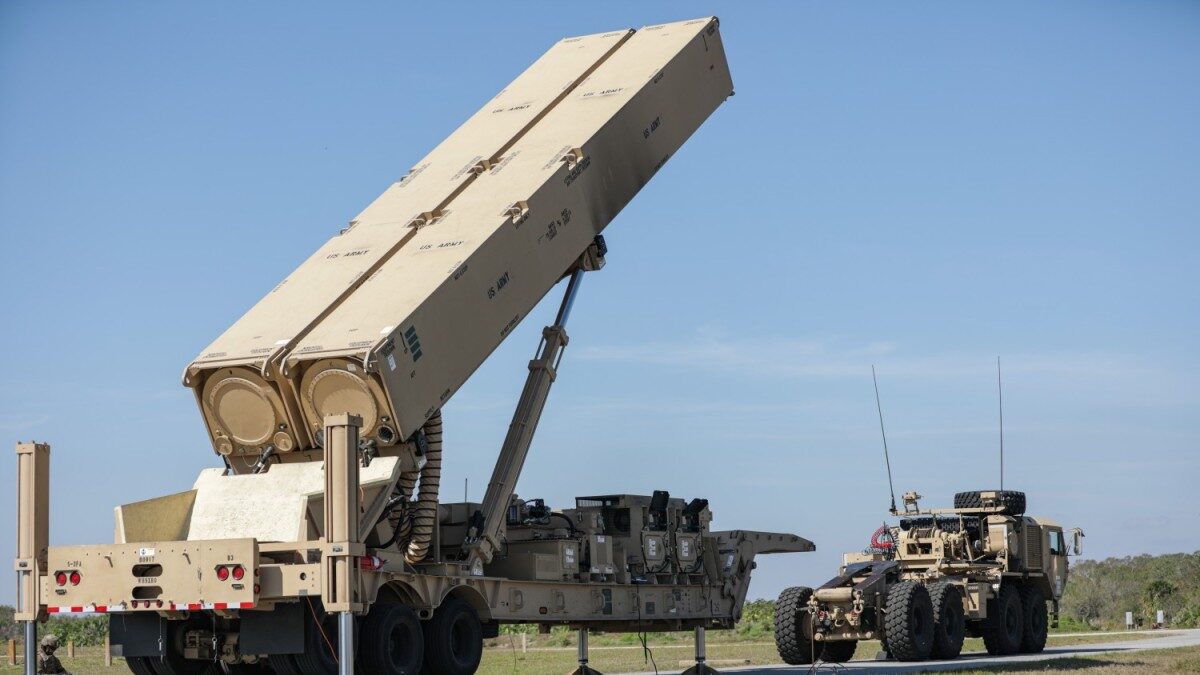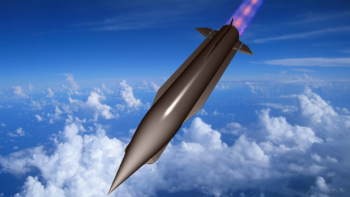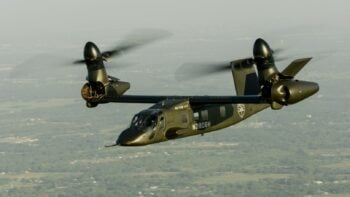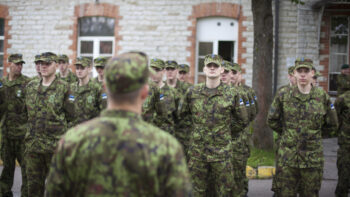
A US Army soldier lifts the hydraulic launching system on the new Long-Range Hypersonic Weapon (LRHW) during Operation Thunderbolt Strike at Cape Canaveral Space Force Station, Florida, March 3, 2023. (US Army/Spc. Chandler Coats)
WASHINGTON — The Army plan to field a long-range hypersonic missile by month’s end hit another speed bump this week when it scrubbed a flight test of the new weapon dubbed Dark Eagle, a Pentagon official confirmed.
“The department planned to conduct a flight test at the Cape Canaveral Space Force Station, Fla., to inform our hypersonic technology development,” a Department of Defense spokesman wrote in a short statement to Breaking Defense today. “As a result of pre-flight checks, the test did not occur.”
However, he noted that the department was able to “successfully” collect data about ground hardware and software performance. “Delivering hypersonic weapons remains a top priority for the department,” the spokesman added.
Florida Today first reported on Wednesday’s failed test.
Pentagon leaders are racing to catch up to China’s hypersonic weapon development and tasked the Army, Navy and Air Force with fielding their own versions of the fast-moving missile. For the Army and Navy, that has meant teaming up to produce a common missile, with the Navy planning to launch it off destroyers and submarines. The Army, meanwhile, is using a land-based truck system to fire rounds capable of traveling “well over” 3,800 miles per hour — five times the speed of sound, the common definition of “hypersonic” — towards targets within a 1,725-mile range, according to a March Congressional Research Services report.
RELATED: Air Force cracks open door on hypersonic ARRW, weeks after indicating it was shut
Soldiers within the 1st Multi-Domain Task Force long-range fires battalion, 5th Battalion, 3rd Field Artillery Regiment at Joint Base Lewis-McChord in Washington have already received key system components and training, and were anticipated to be declared the first operational unit with the new weapon by Sept. 30, the end of fiscal 2023.
However, as is the case with the development of many new weapons, testing hurdles have cropped up for the two services, including several in 2022. In March the Army and Navy scrubbed a test due to a battery failure during a pre-launch check.
By and large, DoD and service officials have remained tightlipped on those testing challenges, and this week’s test is no different, with the Pentagon spokesman referring all other questions over to the Army. The Army’s Rapid Capabilities and Critical Technologies Office (RCCTO) and its main public affairs shop did not respond to questions about the latest test scrub, when a new flight test would occur or what it means for its plans to field the Dark Eagle hypersonic weapon by Sept. 30.
But just last month, RCCTO head Lt. Gen. Robert Rasch told an audience both services and the industry team are eager to “get back out to prove this capability,” though he did not discuss the sticking points.
“We’re not opening up on the champagne bottle right here on the stage but we’re going to get there,” he said, later adding, “Once we… complete that end-to-end testing, and we have confidence in the design there, are missiles lined up in various stages of production ready to finish buttoning up and get those out to the field.”
While the department has not disclosed the new path ahead, Army Under Secretary Gabe Camarillo told an audience at a Defense News conference on Wednesday that he remains “very confident in the program.”
UK picks 90 suppliers to support Hypersonic strike program
The various suppliers were all picked to join a Hypersonic Technologies and Capability Development Framework (HTCDF) agreement, making them eligible to compete for eight lots worth a maximum value of £1 billion ($1.3 billion) over the next seven years.


























